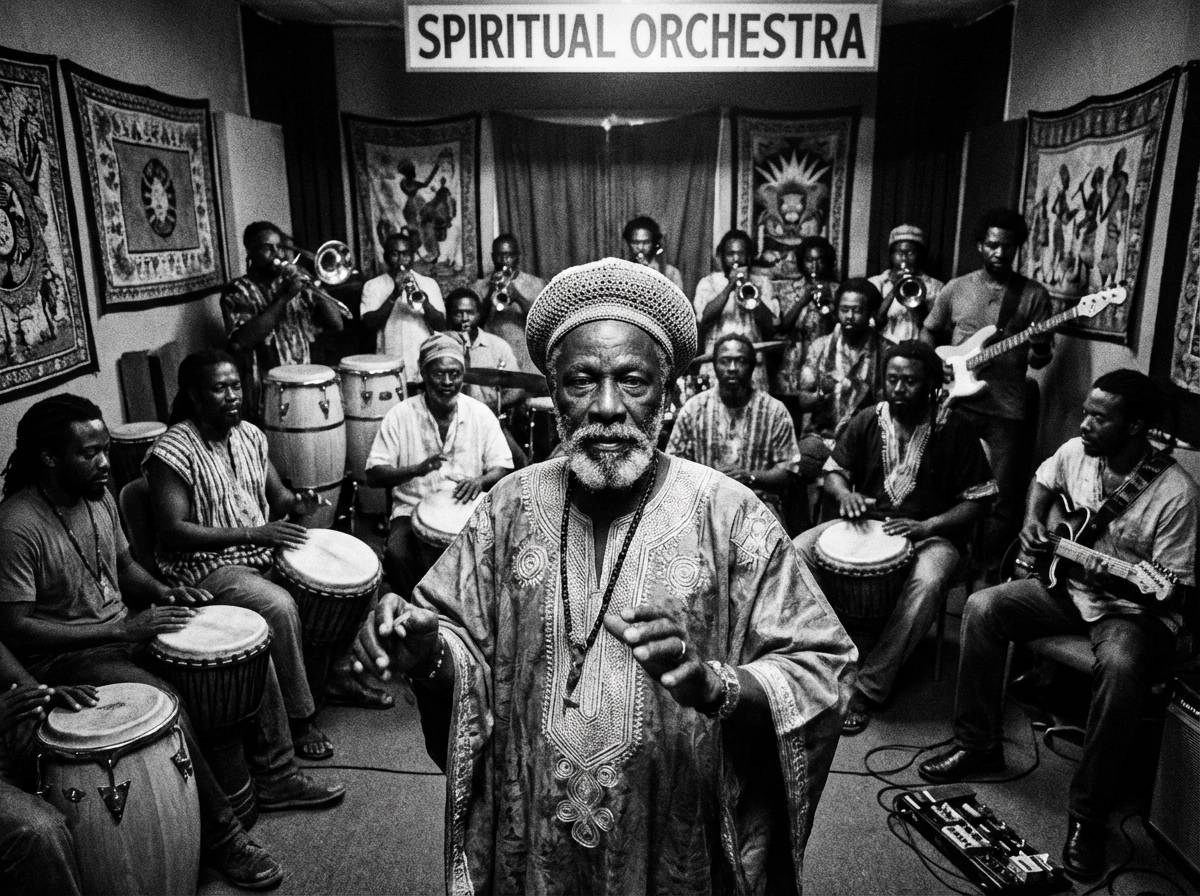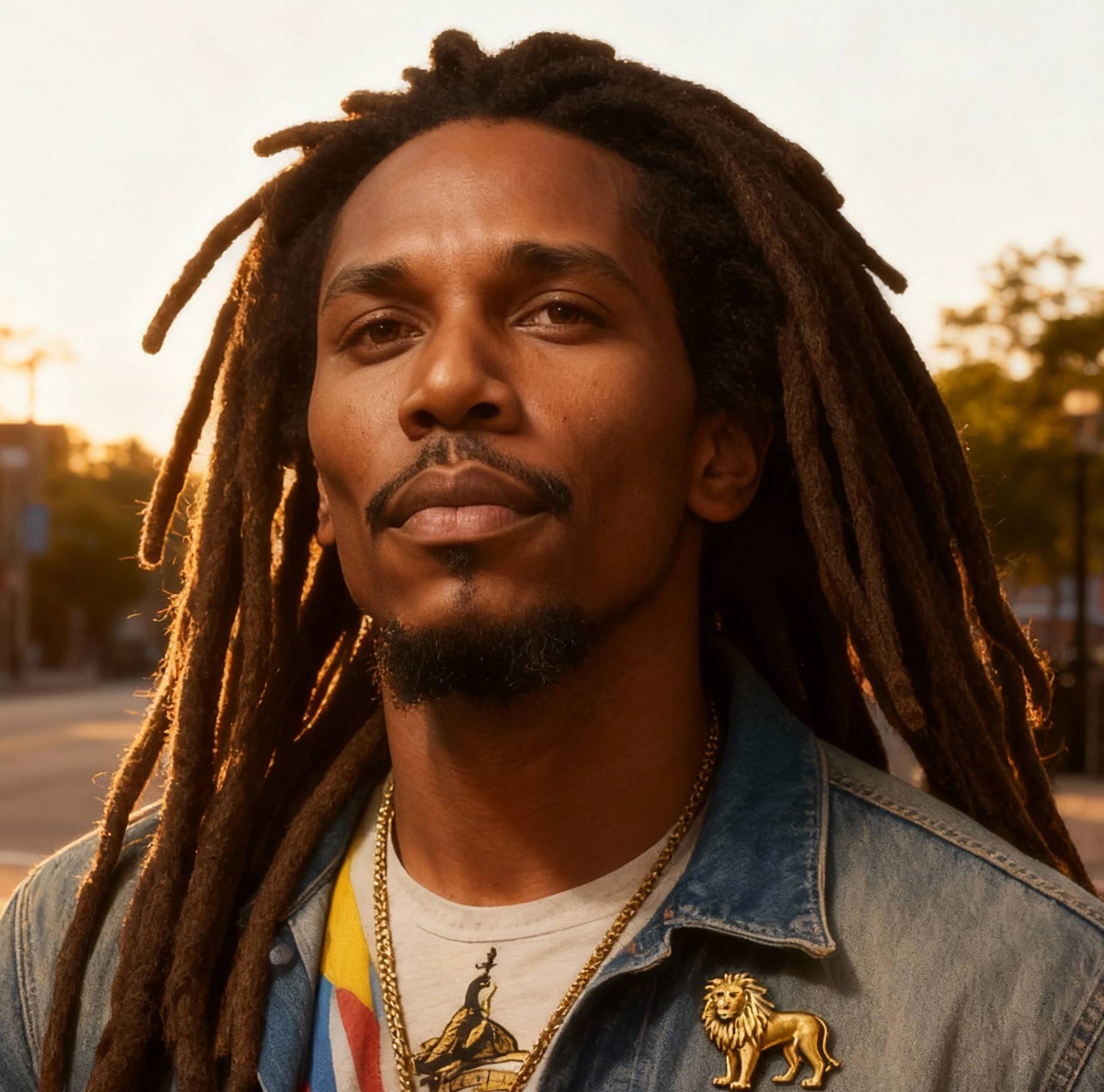Burning Spear Biography Part 4 — Defining the Spear Sound

🔥 Introduction: After Garvey, Something Deeper Was Needed
After the groundbreaking success of Marcus Garvey and Man in the Hills, the world recognized Burning Spear as the voice of Garveyism and roots consciousness. But in the late 1970s, the challenge changed: How do you preserve a message while evolving musically? How do you remain uncompromising when suddenly everyone is listening?
In the years that followed, Burning Spear became something more than a teacher — he became a sound architect. His music grew thicker, deeper, and more hypnotic. His voice became heavier, more ancient, less emotional and more ceremonial. He transformed the reggae band into something closer to a spiritual orchestra.
The era from 1977 through the mid-1980s was where the Spear sound became unmistakable — defined not only by messages, but by the feeling of ritual, the weight of horns, and the rhythmic discipline of a marching ancestor army.
🥁 The Sound of Mysticism: Nyabinghi in the Studio
In the early recordings, Nyabinghi drumming existed mostly as an influence. But in the late 1970s, Spear began integrating its pulse directly into the studio sessions. The bass drum no longer simply kept time — it became a heart. The percussion was not decoration — it was invocation.
Nyabinghi as Structure, Not Style
Where most artists borrowed Nyabinghi rhythm as flavor, Spear treated it as the spiritual backbone of his entire musical philosophy. The repetition, the trance, the call-and-response — all of it was rooted in sacred ceremony.
In interviews, Spear often rejected the idea of being a “musician” in the Western sense. He preferred words like “vessel,” “warrior,” “messenger,” and “man of responsibility.”
🎺 Horns as Memory: The Spear Brass Tradition
One of the most recognizable features of Burning Spear’s mature sound is the horn section — thick, grounded, meditative, like a voice from another time. Unlike ska or rocksteady horns, Spear’s brass lines weren’t flashy or flamboyant. They were like ancient trumpets calling people to ceremony.
Horn Arrangements That Tell History
Instead of solos, the horns often repeated tight, chant-like phrases. They reinforce the lyrics the same way Nyabinghi reinforces the heartbeat rhythm. They create the sensation that something ancestral is speaking — not as entertainment, but as reminder.
📚 The Philosophical Shift: From Teaching to Testifying

In the Studio One and Marcus Garvey eras, Spear was mostly teaching: asking questions, making us think, re-introducing Garvey. But in this period, his voice shifted dramatically — it became less conversational and more oracular. There was a solemn, almost cosmic authority in his delivery.
Key Themes of This Era
- Ancestry and continuity
- Universal African consciousness
- Spiritual warfare against Babylon
- Consequences of forgetting history
- Personal integrity over material gain
Burning Spear’s sound evolved not because of commercial pressure, but because the message demanded stronger architecture.
📀 Essential Albums of the Spear Sound Era
Social Living (1978)
Often considered one of the greatest roots reggae albums of all time, Social Living (also released as Marcus’ Children) revealed a fully developed horn-driven, chant-based sound — deeper than anything he had recorded before. Songs like “Marcus Children Suffer,” “Invasion,” and “Civilized Reggae” feel like scriptures.
Hail H.I.M. (1980)
A more introspective but equally powerful album, Hail H.I.M. brought forward themes of spiritual identity, Rastafari philosophy, and the need for internal discipline. The music feels like an open temple — no rush, no showmanship, just truth.
Farover (1982)
This album shows Spear as a man fully in control of his voice and philosophy. Tracks like “Old Boy Garvey” and the title song point toward the future, not nostalgia. Garvey is no longer just a figure of the past — he is now ever-present.
Resistance (1985)
The sound became heavier and even more militant. Spear established his own label and his own production philosophy. The drums hit even harder. The bass was like an anchor. The voice became thunder.
📡 Independence Becomes Strategy
After the controversies with Island Records, Spear determined that no one would ever alter his message again. This led to greater independence in the studio — a self-produced approach that prioritized message over marketing. He formed Burning Music, which would later release many of his greatest works.
This independence was not simply a business move. It was spiritual. It was cultural. It was an act of survival.
📖 SIDELINE INTEREST STORY — Jamaican Style
There is a story often told in St. Ann — the kind Jamaicans share under a mango tree, where truth blends with folklore and wisdom rule the conversation.
They say that one evening in the late 1970s, Burning Spear returned to his home district after the success of Marcus Garvey. The people had heard rumors of big record sales overseas, tours, newspaper interviews — but Spear remained quiet and grounded, same old Winston walking barefoot on red dirt.
One elder — a local fisherman who had known him since he was a boy — looked at him and said:
“Winston… mi hear seh you reach foreign now. Big stage an’ dem tings. But tell mi dis… all a dat money an’ fame… it change you?”
Spear paused. He looked at the elder with a half-smile and replied quietly:
“Only ting change is the volume. The message stay the same.”
And the fisherman laughed, slapped his knee, and said:
“Aawright then! That mean anywhere you go, Garvey still walkin’!”
And under that St. Ann sunset, the whole community realized something important: Burning Spear wasn’t carrying Garvey to the world — the world had been brought back to Garvey.
That is Jamaican storytelling: simple, rooted, full of truth and spirit. And it illustrates something profound — Burning Spear’s legacy was not built in studios or boardrooms, but in the faith of the people who knew him before the world did.
🎤 The Live Band Becomes a Living Ritual
 By the 1980s, Burning Spear’s band was no longer a backing group; it was a ceremonial ensemble. Performances became intense spiritual events featuring congas, percussions, brass, and Spear’s voice in the center like an ancient bell. There was no jumping, no hype, no showmanship. Only presence.
By the 1980s, Burning Spear’s band was no longer a backing group; it was a ceremonial ensemble. Performances became intense spiritual events featuring congas, percussions, brass, and Spear’s voice in the center like an ancient bell. There was no jumping, no hype, no showmanship. Only presence.
Key Features of Spear’s Live Sound
- Double percussion (Nyabinghi + drum set)
- Layered horn phrases instead of solos
- Minimalist chord changes
- Repetition used as invocation
- Audience chanting as part of the music
👑 From Artist to Cultural Institution
During this period, Burning Spear transitioned from being a popular musician to being regarded as a cultural institution. Academics analyzed his lyrics. African movements used his songs as rallying tools. Rastafari elders treated him like a keeper of ancestral fire.
Unlike other famous reggae artists, Spear became increasingly private, intense, and unmovable. He was not seeking fans. He was building disciples of memory.
🔑 Summary: The Sound That Could Not Be Imitated
The late 1970s through mid-1980s represent a defining stage in Burning Spear’s evolution. This was the era that established:
- The signature horn-heavy spiritual chanting sound
- Nyabinghi-influenced rhythmic foundation
- Complete independence from exploitative industry structures
- A shift from teaching history to embodying history
- A live performance style unlike anyone else in reggae
The Spear sound was now fully formed — not through trends, but through discipline, memory, and intentional cultural resistance.
📎 Conclusion & Transition to Part 5
By the mid-1980s, Burning Spear had evolved into a master builder of sonic ceremonies. The foundation laid at Studio One had now become a fortress — one guarded by Garveyism, craft, discipline, and a deep, fierce independence.
Next comes the formal establishment of Burning Music, the resistance against industry exploitation, and the complete artistic autonomy that would define the next era of his career.
Continue to Part 5: Independence & Spear Records



























